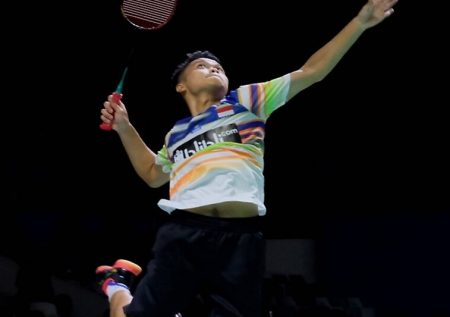

Badminton is a racquet sport played by two people (or four people in doubles). The object of the game is to hit a shuttlecock over a net, and into the opponent’s court. The game can be played either indoors or outdoors.
Badminton is a sport with a long and fascinating history. It has been around since the mid-1800s, when British military officers stationed in India began playing a recreational game called Poona. This was played with racquets and shuttlecocks, similar to how badminton is played today. The game quickly spread throughout the world, and the name ‘badminton’ was coined by the Duke of Beaufort after his country estate in Gloucestershire, England.
As badminton grew in popularity, so did its competitive nature. In 1934, the International Badminton Federation (now known as the Badminton World Federation) was formed to promote and regulate international competitions. In 1936, badminton made its debut at the Olympics as a demonstration sport during the summer games in Berlin. It wasn’t until 1992 that badminton was officially recognized as an Olympic sport at the Barcelona Olympics.
Since then, badminton has grown significantly in popularity around the world. In China alone there are over 100 million players, while other countries such as Malaysia and Indonesia also have large populations of active players. Thanks to its increasing international presence, badminton now features regularly on many sports channels across different continents and millions tune in to watch some of the greatest players compete for coveted titles on one of sporting’s biggest stages – The Olympics Games!
Today there are several different types of tournaments for professional badminton including individual and team competitions held by BWF-sanctioned events like The All England Open Championship or The Sudirman Cup (which is considered to be one of badminton’s most prestigious event). As well as these official tournaments there are also a number of amateur tournaments held all over the world which gives people from all ages and backgrounds an opportunity to enjoy playing this exciting sport!
Badminton is a relatively easy sport to learn, and can be enjoyed by people of all ages. The basic rules are as follows:
A badminton match is composed of three games. The first player to reach 21 points wins the game. If the score is 20-20, the player who reaches two points clear of the opponent first, wins the game.
If a player is not able to continue playing because of injury, illness or any other reason, the other player is declared the winner.
The game is started by one player serving the shuttlecock over the net to their opponent. The opponent then tries to hit the shuttlecock back to their opponent’s side of the net.
Players can only hit the shuttlecock once before it has to go over the net. They can hit it in any direction they want as long as it goes over the net.
If a player fails to hit the shuttlecock back over the net, or hits it out of bounds, then their opponent gets a point
Shuttlecocks are a critical part of the game of badminton. They are made of cork and plastic, and must be hit with a racquet so that they travel over the net and into your opponent’s court. The standard size for a shuttlecock is 6.7 to 7.0 centimeters in length and 6.5 to 6.8 centimeters in width. There are several different types of shuttlecocks, but the most common type is the feathered shuttlecock.
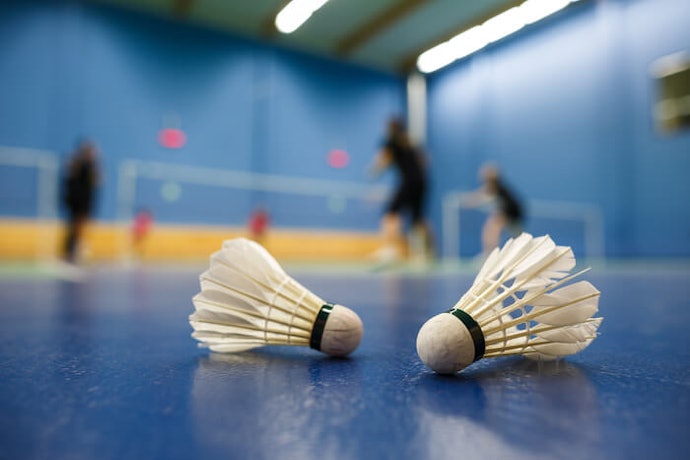
To keep play moving, a shuttlecock must be hit into the opponent’s court before it hits the ground. If it does hit the ground, a point is awarded to the other player. If a shuttlecock travels out of bounds, a point is also awarded to the other player.
Badminton requires two or four players, each with their own racquet and shuttlecock, also known as a “birdie” due to its resemblence to the bird. The goal of the game is to score points by hitting the shuttlecock over the net back into your opponent’s court.
When playing badminton, players must use special equipment for safety reasons. The most common pieces of equipment used in badminton are racquets and shuttlecocks. Racquets come in many different shapes and sizes depending on the user’s skill level. Beginner players may prefer heavier, more durable racquets made from aluminum or steel while advanced players may opt for lighter carbon-fiber racquets for more precise shots. Shuttlecocks are typically made from cork or synthetic materials such as rubber or plastic, depending on whether being used indoors or outdoors.
Players may also choose to wear specialized clothing when playing badminton, such as shirts and shorts designed specifically for running and jumping activities. Additionally, those playing indoors may want to purchase non-marking shoes specifically designed for use on indoor courts; these shoes typically have softer soles which help reduce noise while providing better grip on slick surfaces. Finally, eye protection should always be worn when playing badminton due to the potential danger posed by flying shuttlecocks near one’s eyes.
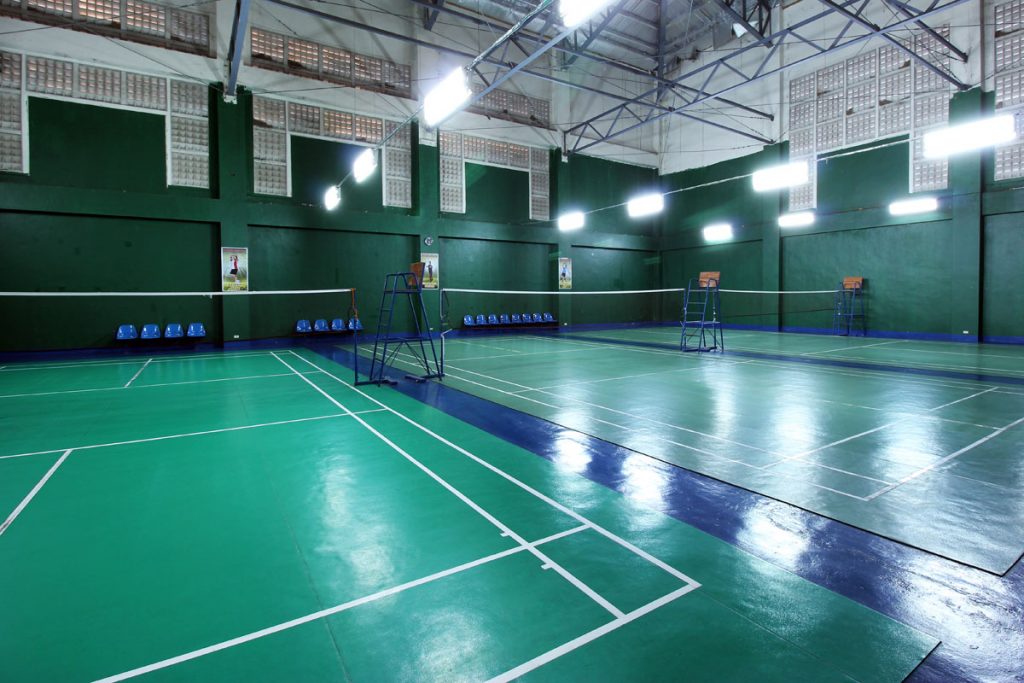
A badminton court is a rectangular area measuring 44 feet by 22 feet. The court is divided into two equal halves by a net that is 5 feet high. The playing surface of the court is normally made of wood, although other materials such as concrete and vinyl can also be used. A badminton court must meet the following requirements:
When playing badminton, it is important to be aware of the correct service procedures. The following are the steps for serving badminton:
In badminton, the service court is the rectangular area bounded by the net and the sidelines, in which the server stands when serving. The receiving court is the other half of the playing court, in front of the net, where the receiver stands. The service court is also known as the “striking zone”.
When serving, the server must stand within the service court with at least one foot on or inside the boundary. The serve is initiated by tossing or hitting the shuttlecock into the air so that it will land in the receiving court. The shuttlecock must be hit above waist height and must not bounce more than once on the floor.
The receiver must try to catch or hit the shuttlecock before it bounces twice. If the shuttlecock hits the ground before either player can hit it, a let is called and a new serve is played. If a player hits the shuttlecock out of bounds, a fault is called and they lose their turn to serve.
When playing badminton, it’s important to be aware of the change of ends. This means that when one side is serving, they will only get 3 serves before having to give the other side a turn. The other side then gets to serve for 3 consecutive points, after which the first side gets to serve again. If the person who is serving loses the point, then their service turn ends and the other side gets to serve. This can be confusing for beginners, so it’s important to be aware of how the change of ends works in order to play fair badminton games.
Faults in badminton are a major part of the game that can lead to points being taken away from a player or an entire team. As such, it is important for players to be aware of what these faults are and how they can be avoided in order to ensure optimal results.
Common faults like foot faults, double hits, and net violations are all examples of mistakes that can be made during a badminton match. Foot faults occur when players fail to stay within the boundary lines while serving, double hits refer to hitting the shuttlecock twice before it lands on the opponent’s side, and net violations occur when players hit the shuttlecock into their opponent’s court over the net without a proper clearance. All three of these faults can result in point deductions for the offending player or team.
In addition to these more standard forms of faulting, there are other less common errors that can also lead to point deductions. For instance, if a player serves before their opponent is ready or if they continuously change their grip on the racket during a rally, then this would also count as a fault under current tournament rules. Furthermore, unsportsmanlike conduct such as shouting at an opponent or making inappropriate facial gestures could also result in point deductions in certain tournaments.
In badminton, a let is a call that stops the action of the game and results in a replay. A let may be called for a number of reasons, such as a player hitting the shuttlecock out of bounds, it being hit multiple times by the same player, or a player hitting the net.
Continuous play in badminton is an important skill for players to develop. It requires the player to make quick decisions and react quickly to shots from the opponent. Continuous play helps a player to maintain momentum and keep their opponent under pressure. It also helps to reduce the number of unforced errors as well as give the player more time to set up their own shots.
In traditional badminton, continuous play consists of four main parts: serve, return of serve, rally and defence. The serve is used to put your opponent under pressure and gain control of the point by controlling where they can hit the shuttlecock. Once this has been achieved, it’s then important to quickly return the shuttlecock so that you can maintain control of the point safely. During the rally, it’s important for both players to mix up their shots in order to keep their opponent guessing and off balance. Lastly, defence is key in badminton – being able to respond quickly to opponents shots allows players to stay in control of points and not allow their opponents too much time or space on court.
Overall, continuous play is a crucial skill for any badminton player looking to succeed in competition level play. Developing good technique and understanding when and how best to use each shot are essential elements for any aspiring badminton player looking to improve their game. With practice and dedication, continuous play will become second nature allowing players flexibility on court and increased ability against opponents at all levels.
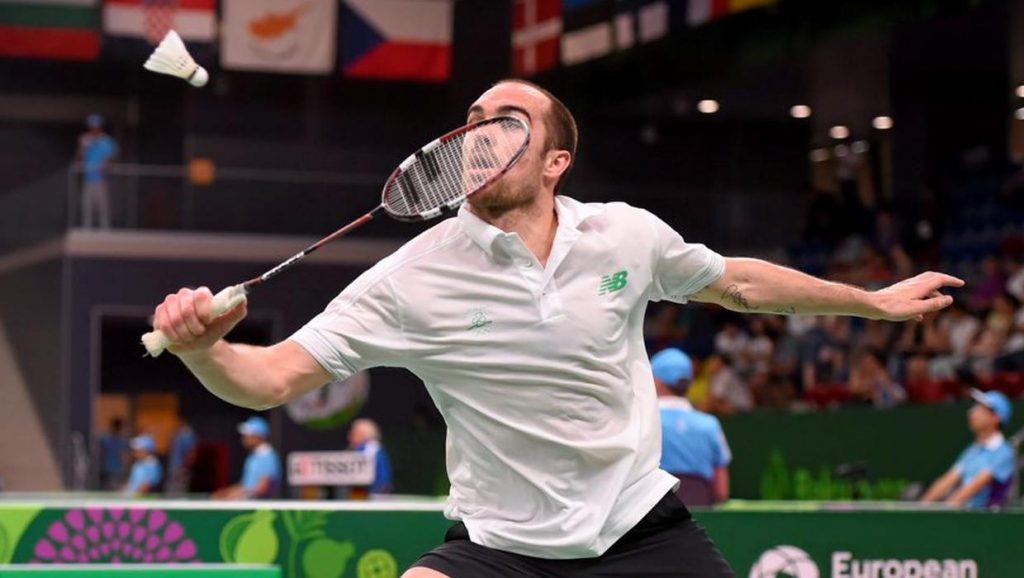
There are a few basic rules that you need to know in order to play singles badminton:
When playing doubles badminton, the most important rule to remember is that both players on a team must stay in their respective halves of the court. This means that if one player moves to the other side of the court, they will automatically lose the point.
In addition to staying in their own half of the court, players must also make sure they do not cross the center line while hitting the shuttlecock. If a player crosses the center line, it is an automatic fault.
Players are also not allowed to hit the shuttlecock below net height. If they do, it is called a ‘foot fault’ and results in a point for the opposing team.
The serve must be hit diagonally across the court and must land within the service zone on the opponents’ side. If it doesn’t land within this zone, it is considered a fault and the other team gets awarded a point.
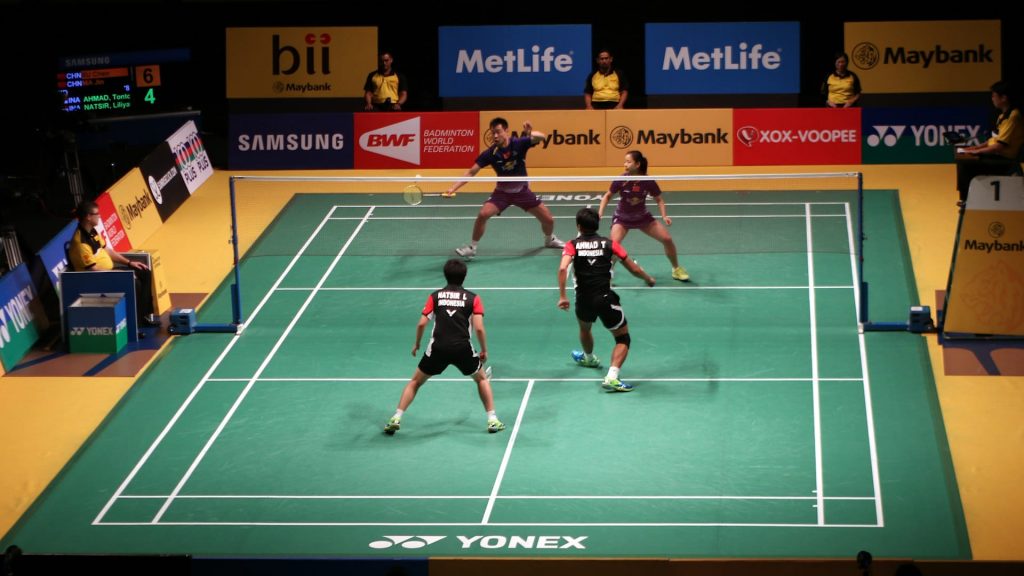
The scoring system for badminton is as follows: In singles, the first player to reach 21 points, with a margin of 2 points, wins the game. In doubles, the first team to reach 21 points, with a margin of 2 points, wins the game. If the score reaches 20-20, then the game goes into overtime (the first player or team to score 2 points in overtime wins).
In badminton, the interval and change of ends is an important part of the game. For singles, the interval is usually 21 points, while for doubles it is 11 points. The change of ends occurs when one side reaches 7 points, or 3 points ahead of the other side. This ensures that each side has an equal chance to win, and also keeps the game exciting by providing more opportunities for comebacks.
The interval and change of ends are also important in doubles matches. Because there are two players on each side, it is possible for one player to make a mistake while the other player can still win the point. This can keep the game close, and prevent one team from easily winning the match.
The badminton event made its first appearance in the Olympic Games in 1992. Since then, it has been a popular event, with both men’s and women’s singles and doubles competitions. The badminton competition is unique in that it is one of the few sports in which athletes can win a gold medal without defeating any opponents. This is because the badminton competition consists of a round-robin tournament in which each player plays every other player once. The player who wins the most matches is the champion.
The top players in the world have dominated the badminton competition over the years. In men’s singles, Lin Dan of China has won gold medals in 2004, 2008, and 2012. In women’s singles, Li Xuerui of China has won gold medals in 2012 and 2016. In men’s doubles, Lee Yong Dae and Jung Jae Sung of South Korea have won gold medals in 2008 and 2012. In women’s doubles, Wang Xiaoli and Yu Yang of China have won gold medals in 2012.

The United States has not had much success in badminton at the Olympics. The best result was achieved by Howard Bach and Tony Gunawan, who won silver medals in men’s doubles in 2000. However, things may be changing for American badminton players. In 2016, Michelle Li became the first American to win a medal in women’s singles when she won bronze. And in 2017, Lauren Davis became the first American to reach the semifinals of a badminton tournament at the Olympics when she reached the semifinals of women’s singles.
There are a few key rules of badminton that players should always remember. These include not crossing the center line, not touching the net, and not hitting the shuttlecock with anything other than the racquet. Players must also ensure they are in proper position before serving, and hit the shuttlecock downward to ensure it goes over the net.
In badminton, there are a few important terms that players need to know. The first is shuttlecock. This is the object that is hit back and forth across the net. It is made of cork and covered in 16 goose feathers. The feathers are arranged in a particular way so that the shuttlecock flies in a stable pattern. Next, there is the net. This is the barrier that separates the two sides of the playing area. It is typically made of corded mesh and stands 5 feet high in international competition. There are also different types of shots in badminton. The most basic shot is the serve, which is used to start the point. Other shots include the clear, drop shot, and smash.
In badminton, there are a few things you cannot do. You cannot hit the birdie before it crosses the net. You cannot intentionally hit the birdie out of bounds. You cannot hit the birdie above the waist. And you cannot hit the birdie below the net. If you break any of these rules, you will be penalized.